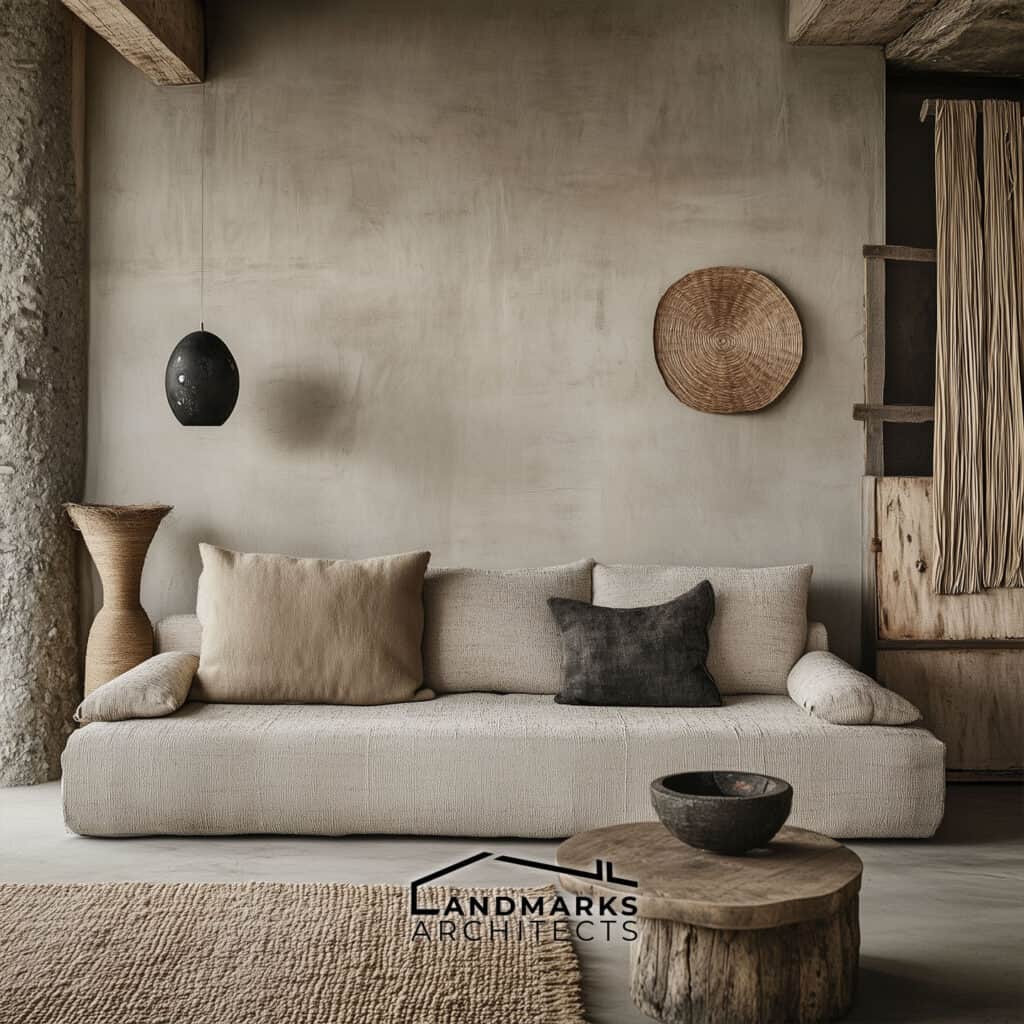
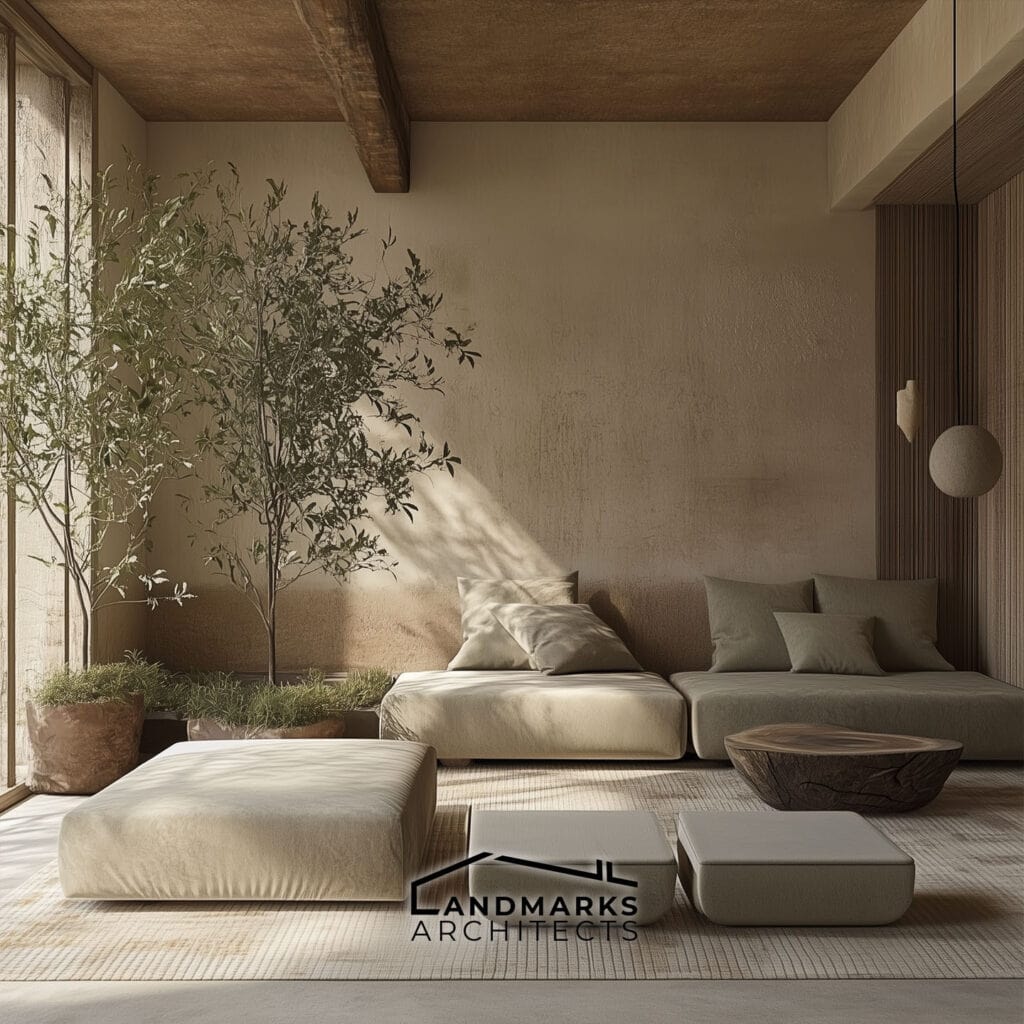
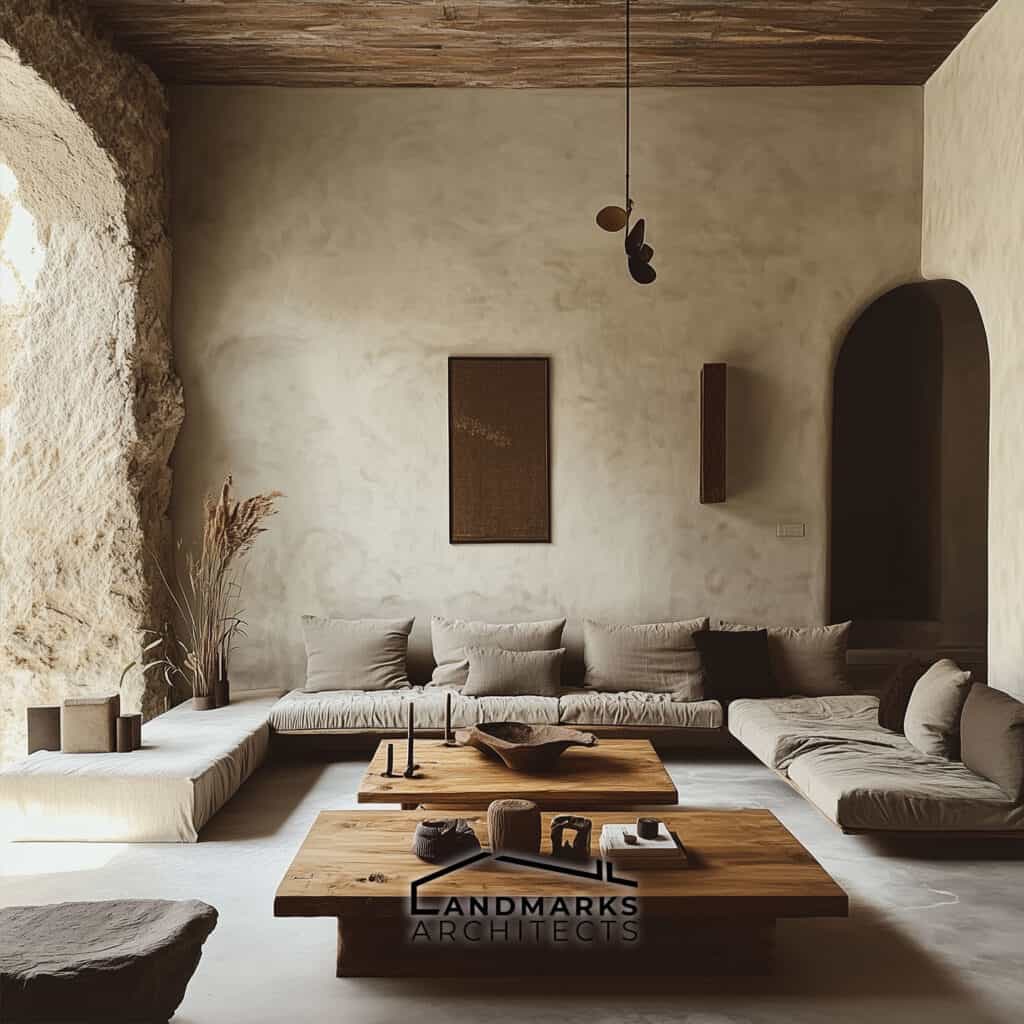

How can you create a home that embraces beauty in simplicity and imperfection? Wabi-Sabi, a Japanese philosophy turned design style, offers a fresh perspective by celebrating natural materials, minimalism, and the passage of time.
As someone looking to create a peaceful and authentic space, the Wabi-Sabi approach helps you focus on what truly matters—nature, handcrafted elements, and imperfection.
At Landmarks Architects, we understand the desire for a home that reflects your journey, and we’re here to guide you through the essentials of this timeless design philosophy.
In this article, we’ll explore:
- Highlights key elements of Wabi-Sabi design: natural materials, simplicity, and organic beauty
- Emphasizes earthy tones, natural light, and authentic, imperfect furniture
- Celebrates imperfection and impermanence for a peaceful, mindful space
Ready to discover how Wabi-Sabi can transform your living space? Let’s navigate the principles of this unique, serene design style.
What is Wabi-Sabi Interior Design?


Wabi-Sabi is a Japanese philosophy that finds beauty in imperfections and the passage of time. This design style values natural elements and simplicity, making it a key part of Types of Architectural Styles that focus on minimalism and nature.
Key principles of Wabi-Sabi interior design include:
- Natural Materials: Wood, stone, and clay are used for their organic textures.
- Muted Colors: Earthy tones like browns, greens, and grays create a calming space.
- Simplicity: Focus on essential items and avoid clutter.
Wabi-Sabi celebrates asymmetry and worn items, highlighting their character and history. It encourages a strong connection to nature and promotes a peaceful atmosphere.
Wabi-Sabi interiors, inspired by Japanese art and culture, often use handcrafted items to add a personal touch, appreciating imperfections and fleeting moments for a unique and calming home.
Key Elements of Wabi-Sabi Design
1. Natural Materials
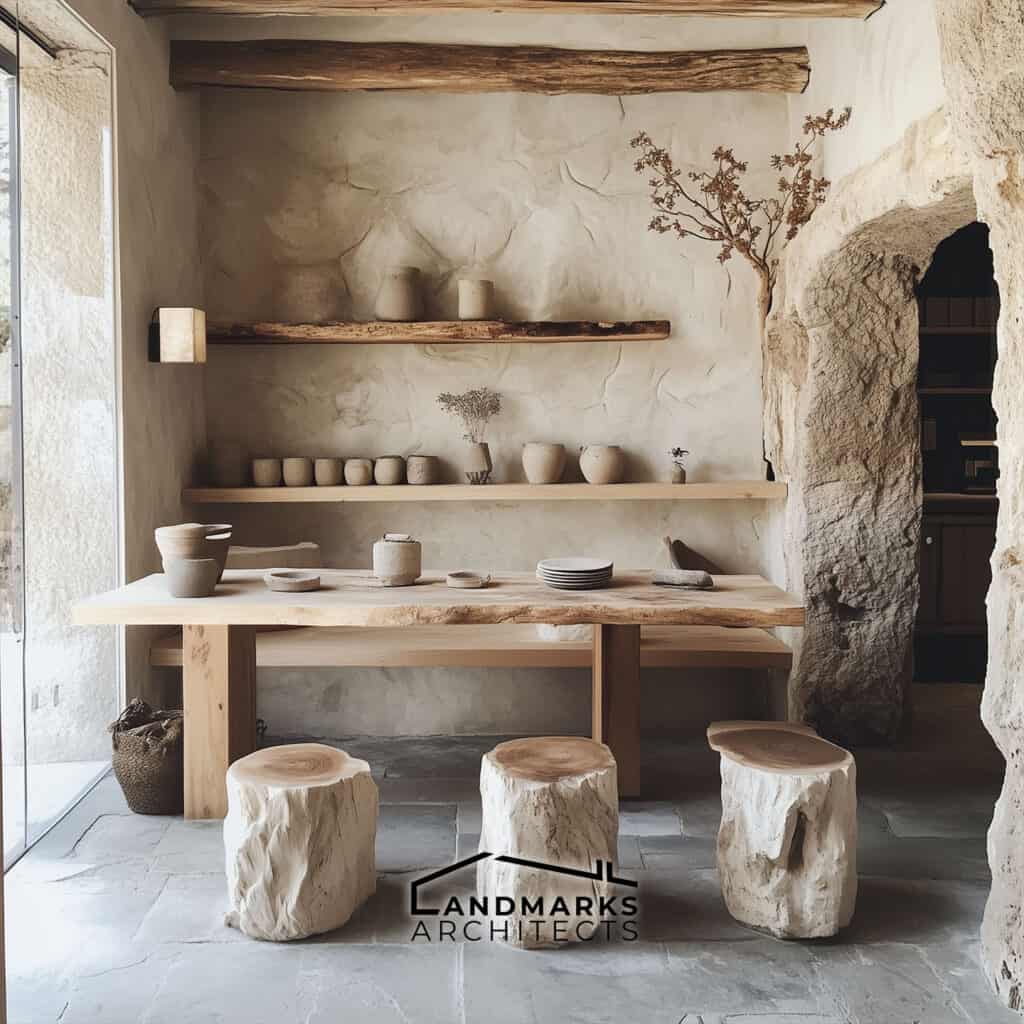
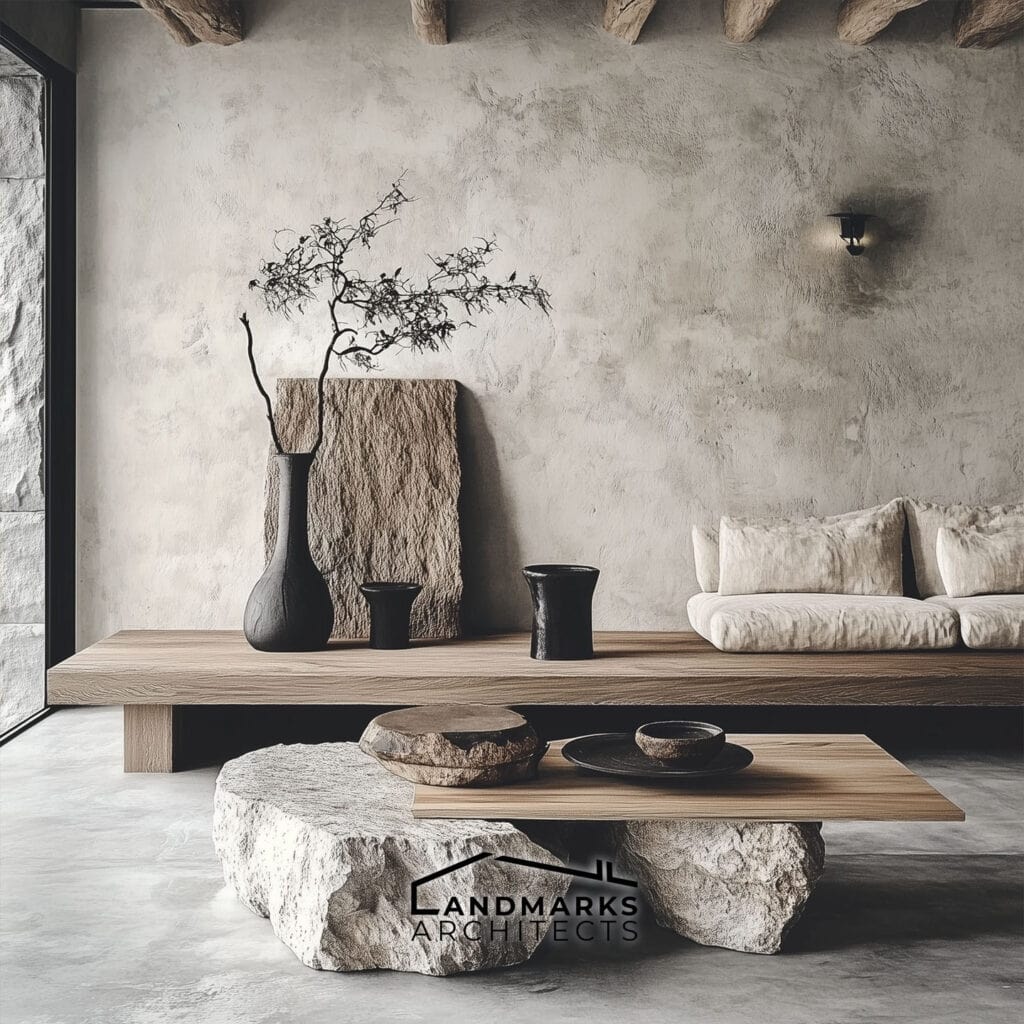
Wabi Sabi’s interior design embraces natural materials. This philosophy celebrates the beauty of raw textures and organic forms. Common materials include:
- Wood: Often used for furniture and flooring. It showcases grains and imperfections.
- Stone: Adds a timeless quality, connecting interiors to the earth.
- Clay: Frequently used in pottery and tiles, enhancing the rustic feel.
The use of earthy tones complements these materials, creating a soothing atmosphere. Colors such as muted greens, browns, and soft grays reflect nature.
Natural elements like plants can enhance the Wabi Sabi aesthetic. They introduce life and freshness into spaces. The focus is on simplicity and authenticity. Objects tell a story through their wear and imperfections.
This design approach encourages appreciation for the old and weathered. Such elements contribute to the unique character of a space.
See Aslo How Do I Make My Interior Look Luxurious? 10 Essential Tips
2. Natural Beauty
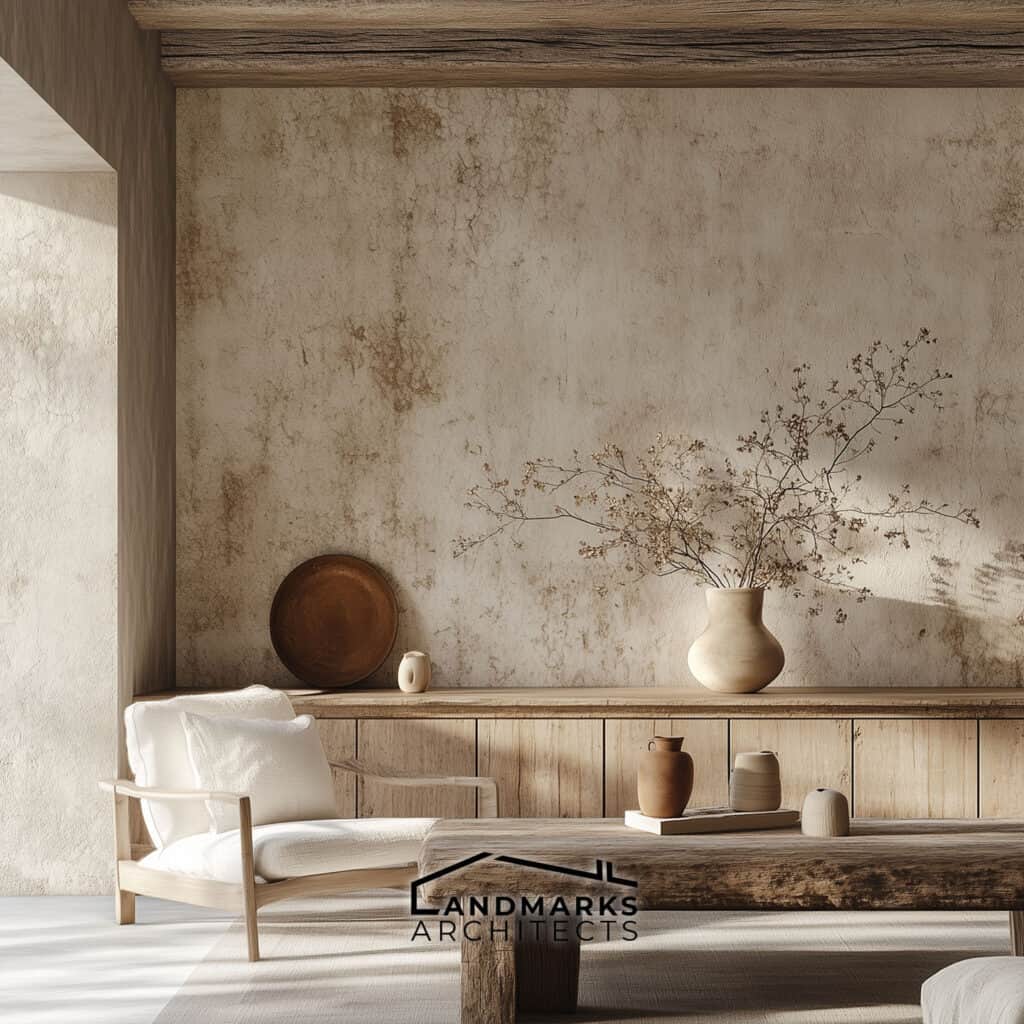
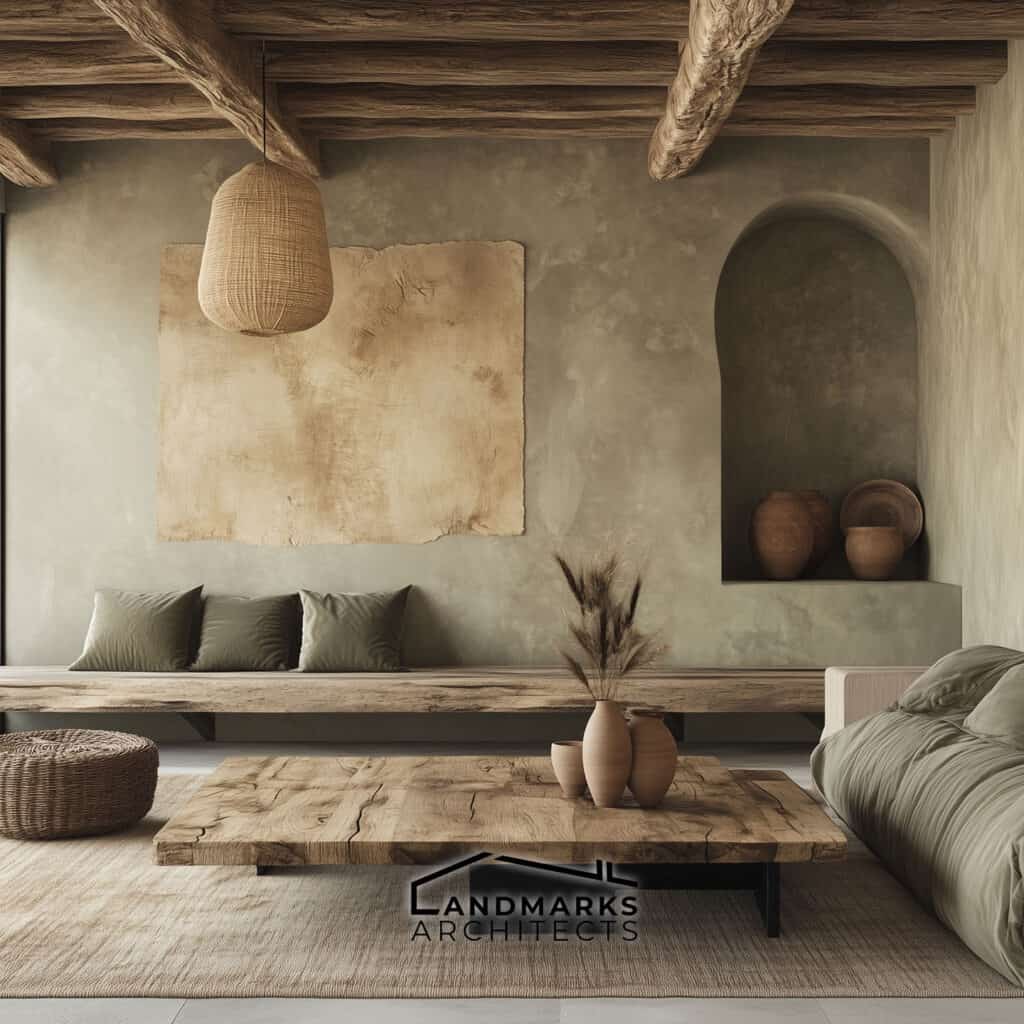
Wabi-sabi design embraces natural beauty by highlighting imperfections. This philosophy values the unique character and history of objects. Cracks in pottery or weathered wood add charm. Asymmetry is embraced, with elements that aren’t perfectly aligned.
Soft, earthy colors reflect nature’s simplicity and calmness. Materials that show wear are appreciated for their story and life. Wabi-Sabi finds beauty in flaws, encouraging a deeper connection to our surroundings by appreciating the imperfect.
3. Simplicity
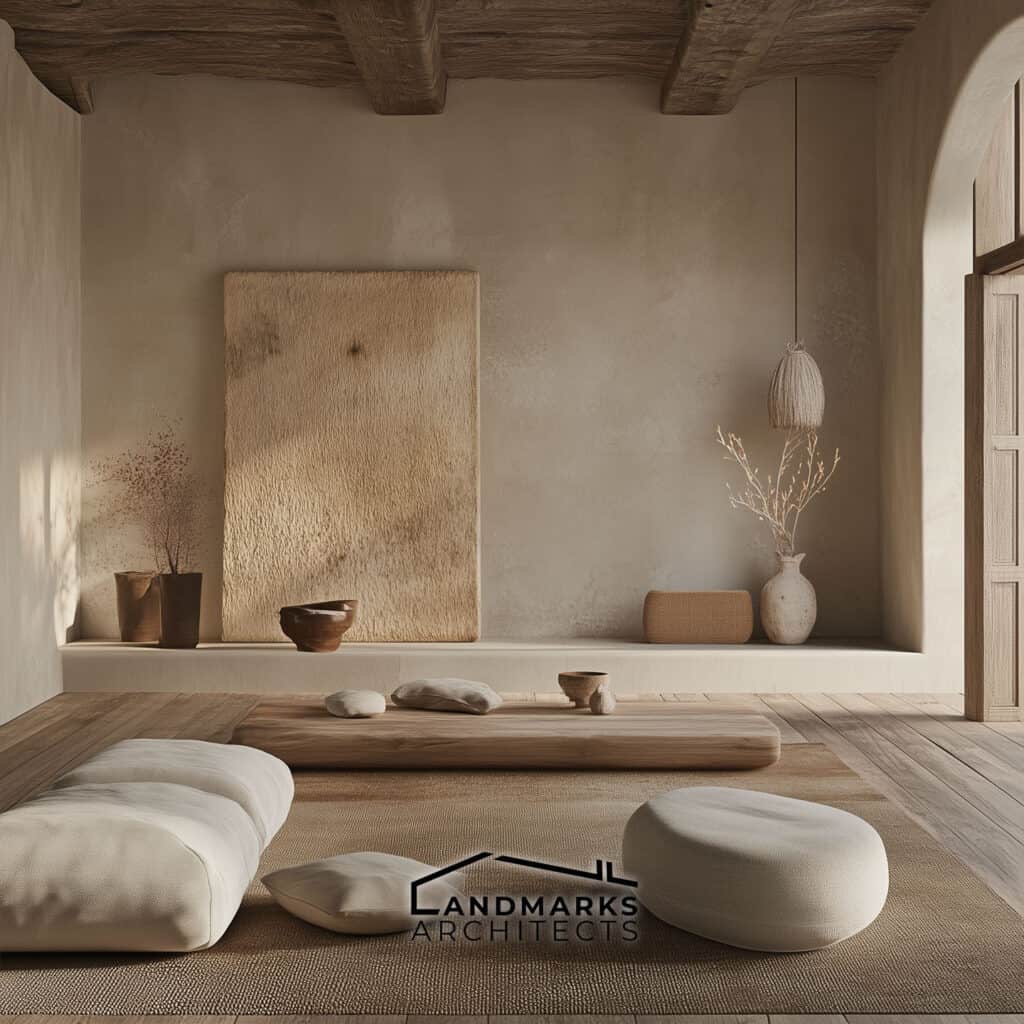
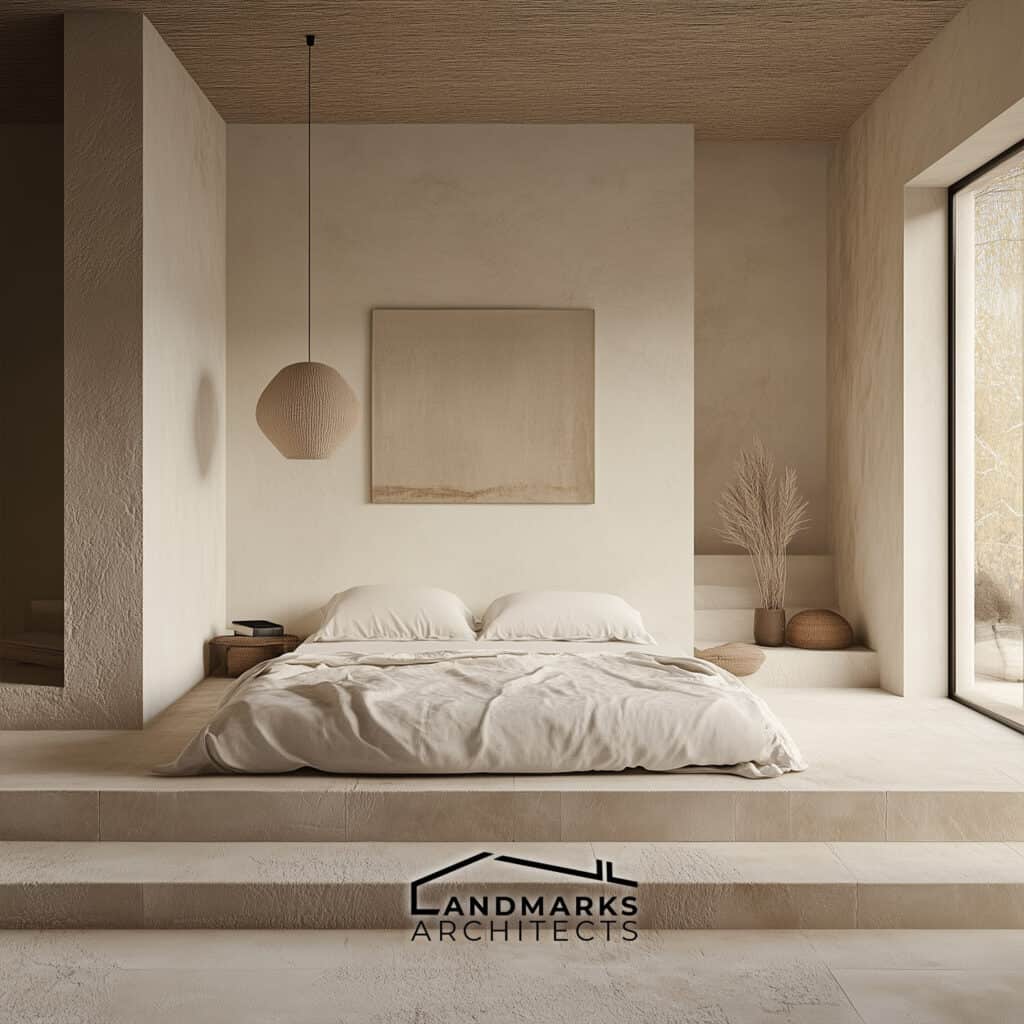
Simplicity is key in Wabi-Sabi design, focusing on minimalism and clean lines. This style values the beauty of simple, understated elements. Uncluttered surfaces highlight the natural imperfections of materials. Every item in the room has a purpose without overwhelming the space.
Key Features of Simplicity in Wabi-Sabi:
- Clutter-Free Spaces: A clean, calm environment helps focus on the essentials.
- Natural Materials: Wood, clay, and stone in raw forms showcase simple beauty.
- Soft Color Palettes: Earthy tones create a peaceful, relaxing atmosphere.
By embracing simplicity, Wabi-Sabi brings peace and comfort into the home.
4. Earthy Tones
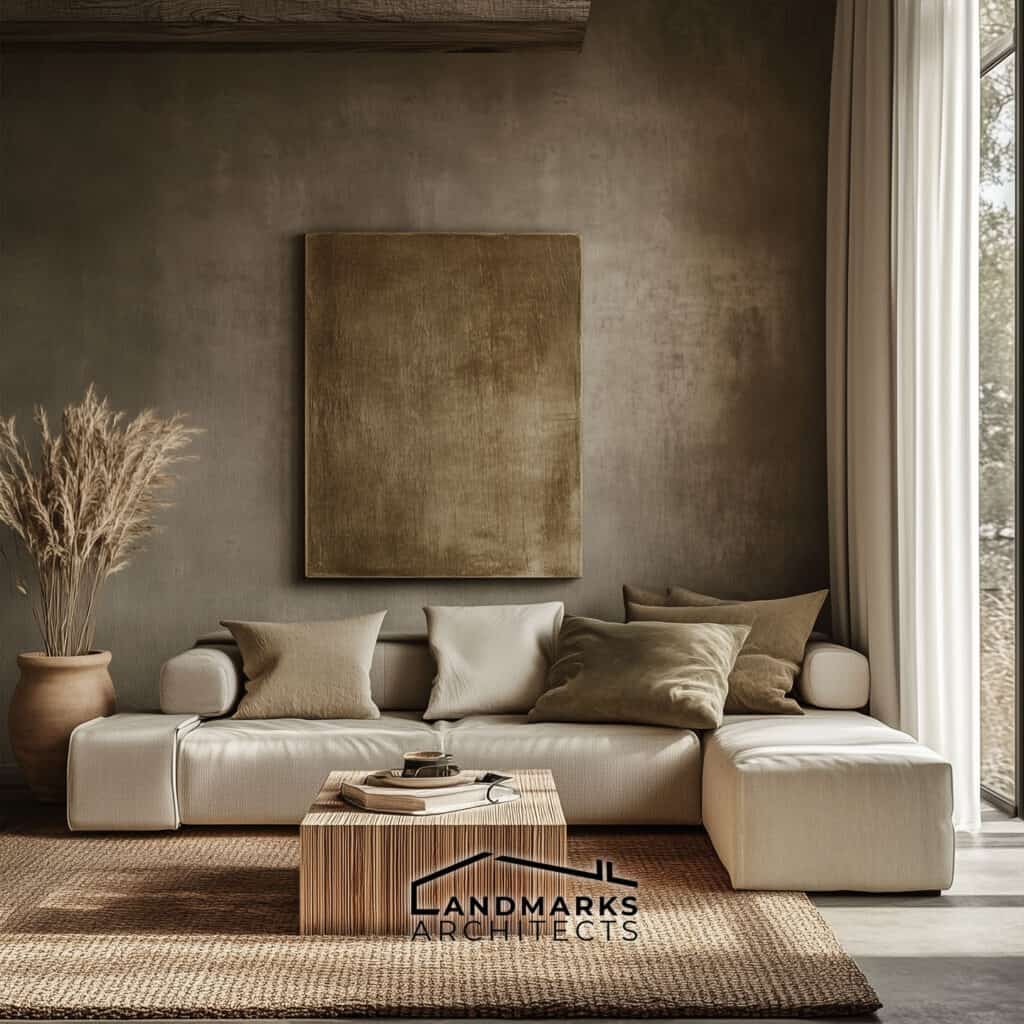
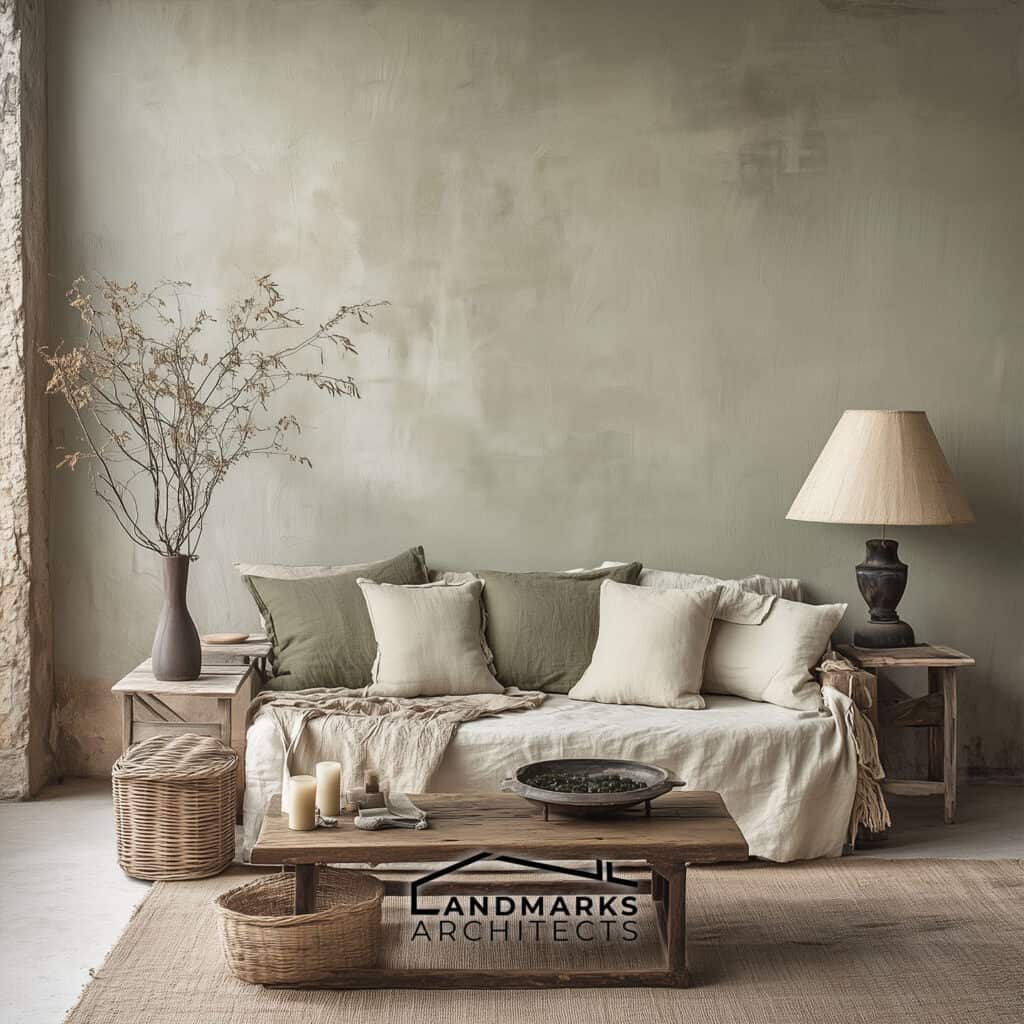
Earthy tones like muted greens, browns, and soft grays are key in Wabi-Sabi design. These colors connect to nature and create a peaceful space.
Warm tones on walls promote comfort and highlight natural light. Materials like wood, stone, and linen pair well with these shades, adding a sense of history. Neutral tones add flexibility, blending with different styles while keeping things simple, a key part of Wabi-Sabi.
5. Natural Light
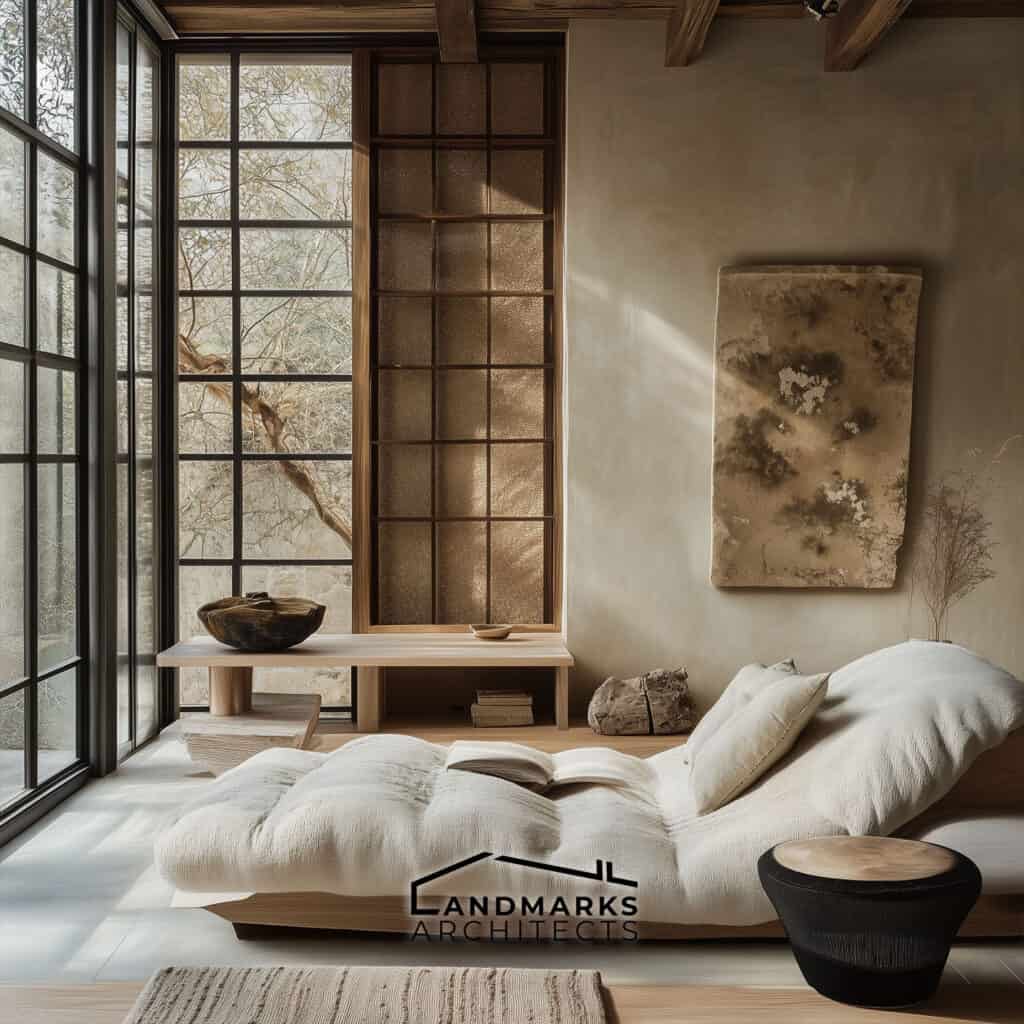

Natural light is key in Wabi-Sabi design. It enhances the organic beauty of a space, matching the philosophy of simplicity and authenticity. Designers often use large windows and open layouts to let in sunlight. This creates warmth and highlights textures. Light also reveals the imperfections in materials, adding unique character.
Natural light makes soft colors feel warmer and more inviting. It improves the look of a room, creating a calm and peaceful atmosphere that suits the Wabi-Sabi style and encourages mindfulness.
6. Japanese Design
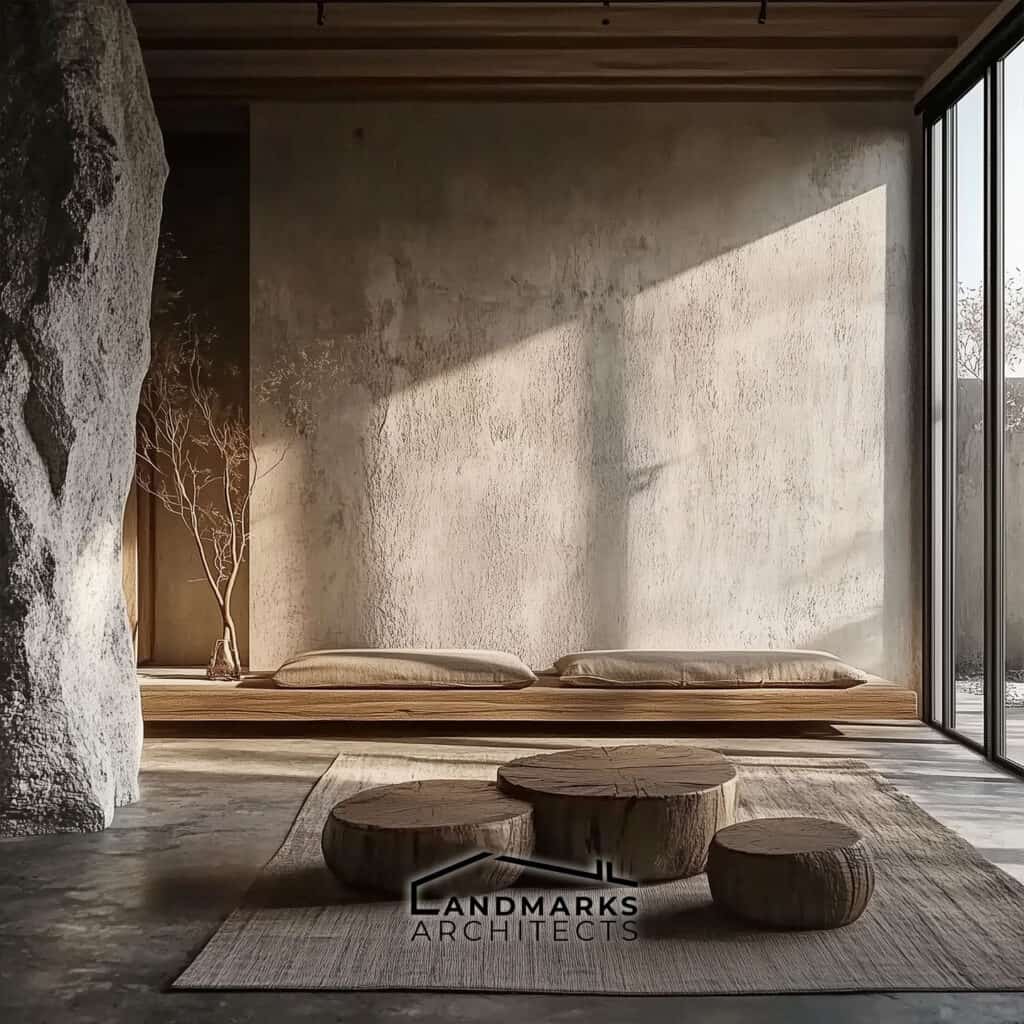
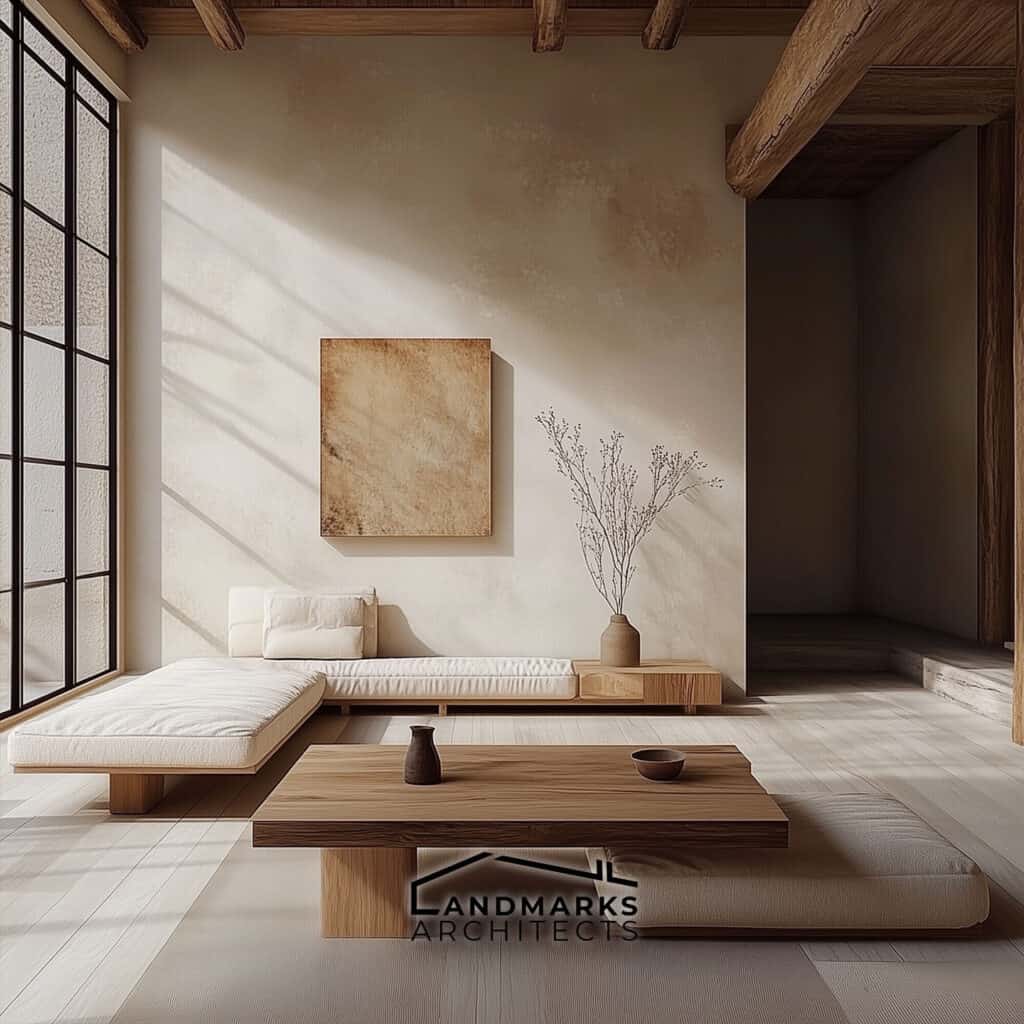
Wabi-sabi design comes from Japanese ideas, focusing on simplicity, usefulness, and natural beauty. It values imperfections and uses materials like wood and stone to highlight their natural look. Key Elements:
- Minimalism: Simple spaces create calm.
- Organic Textures: Natural shapes and forms are highlighted.
- Tea Ceremonies: Emphasize mindfulness and simplicity.
Wabi-sabi interiors often use asymmetry to create harmony and connect with nature. Japanese art shows beauty in the fleeting and rustic, helping create a peaceful and reflective space.
See Also Chinese vs. Japanese Architecture: 6 Contrasts in Harmony and Dichotomy
7. Authentic Furniture
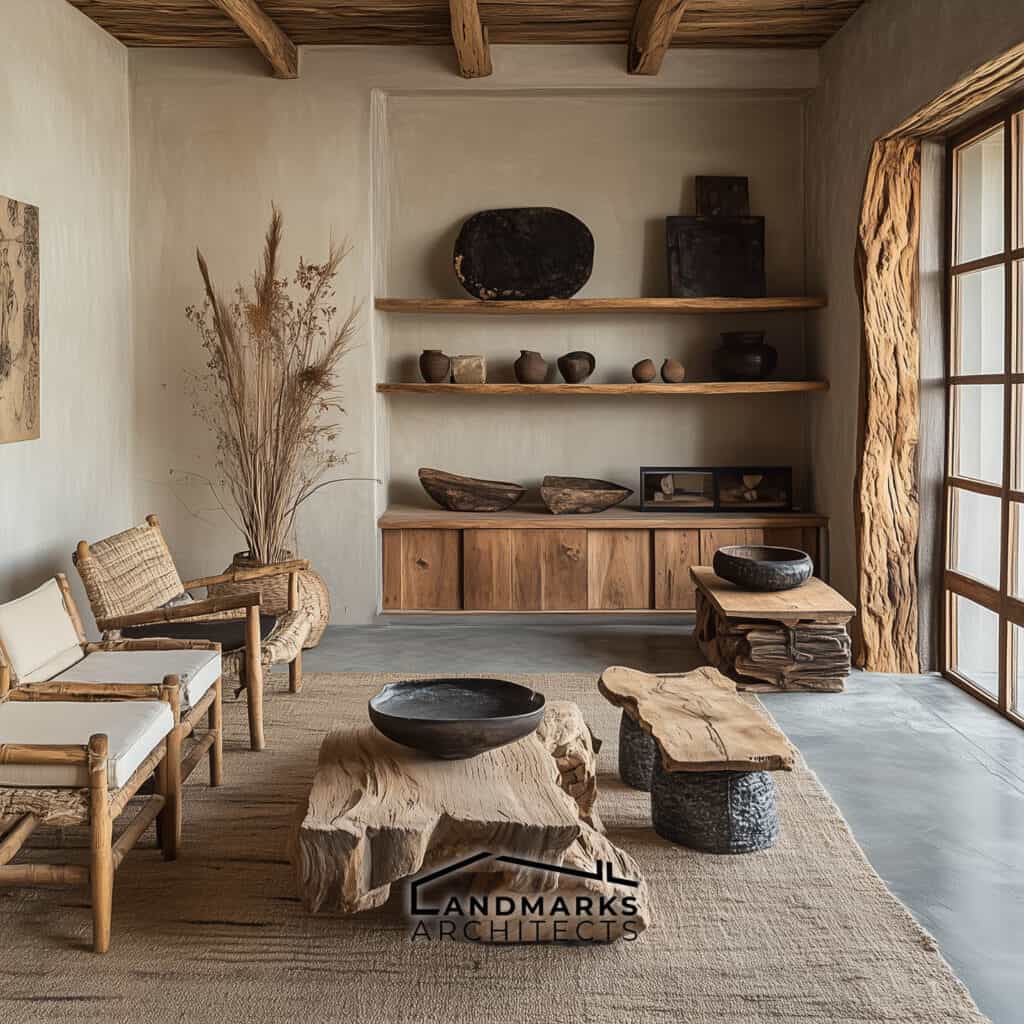
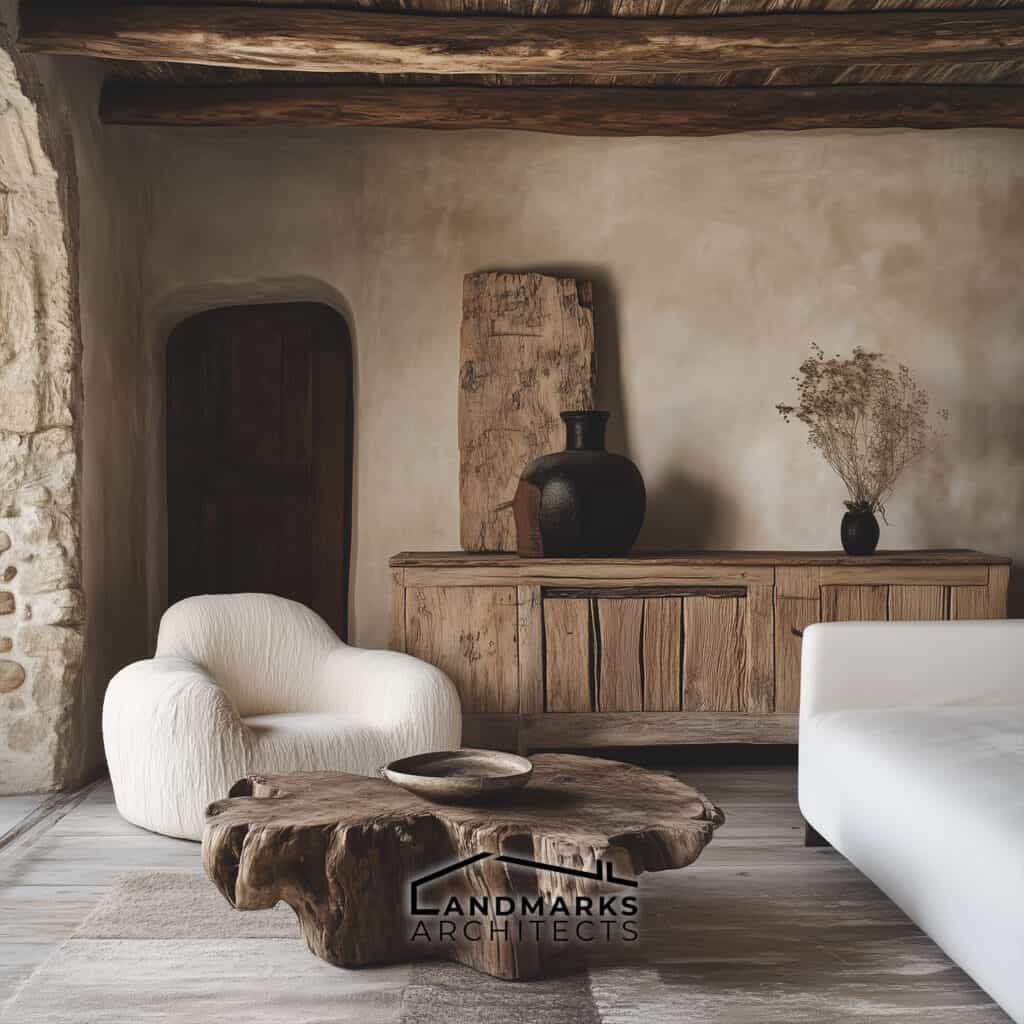
Authentic furniture is key in Wabi-Sabi design, highlighting imperfections and natural beauty. Furniture made from raw materials shows unique textures and colors. Each piece tells a story through its wear and aging. Handcrafted items fit the Wabi-Sabi style, using sustainable methods and materials.
This creates a strong connection with the environment.
Choosing furniture that feels personal and shows imperfections improves the look of the space. Chairs, tables, and shelves should be simple and elegant. Authentic furniture makes a room feel calm and special by highlighting its natural flaws.
8. Mindful Spaces
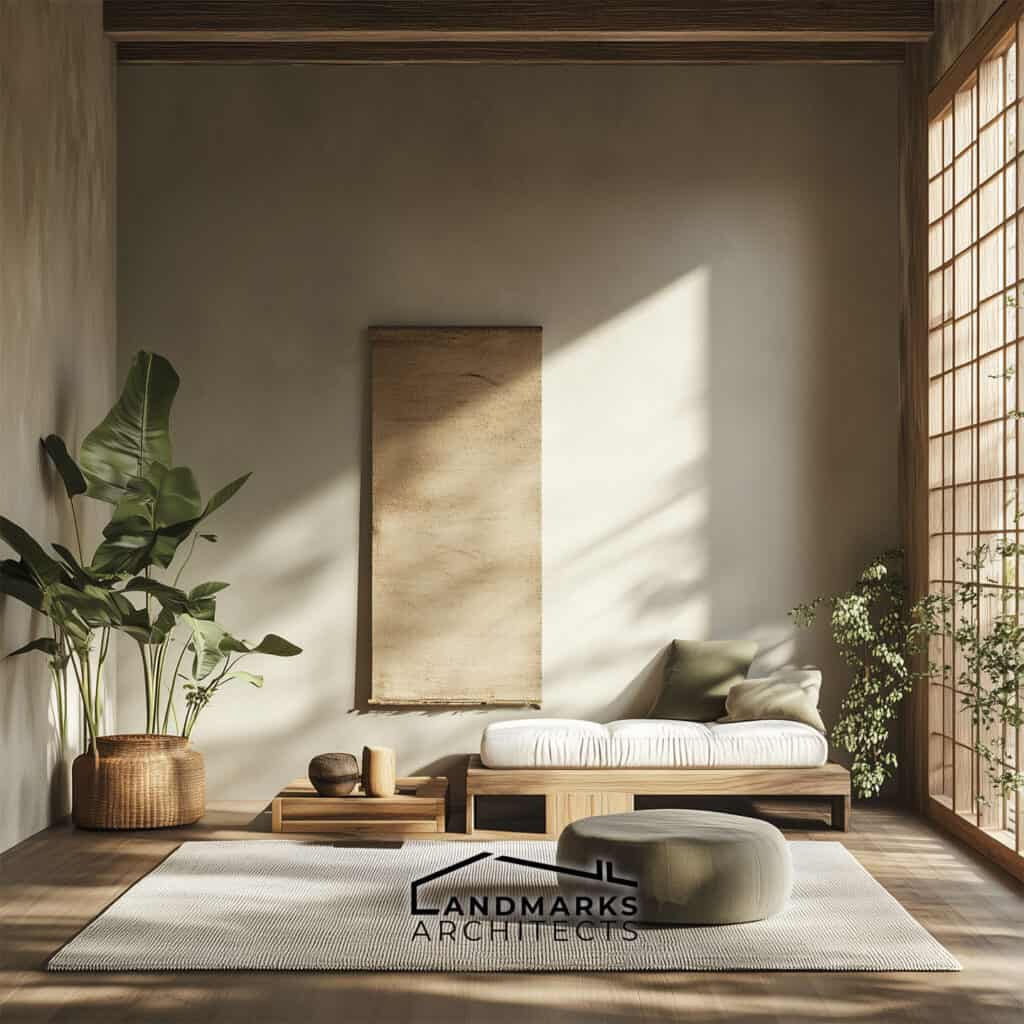
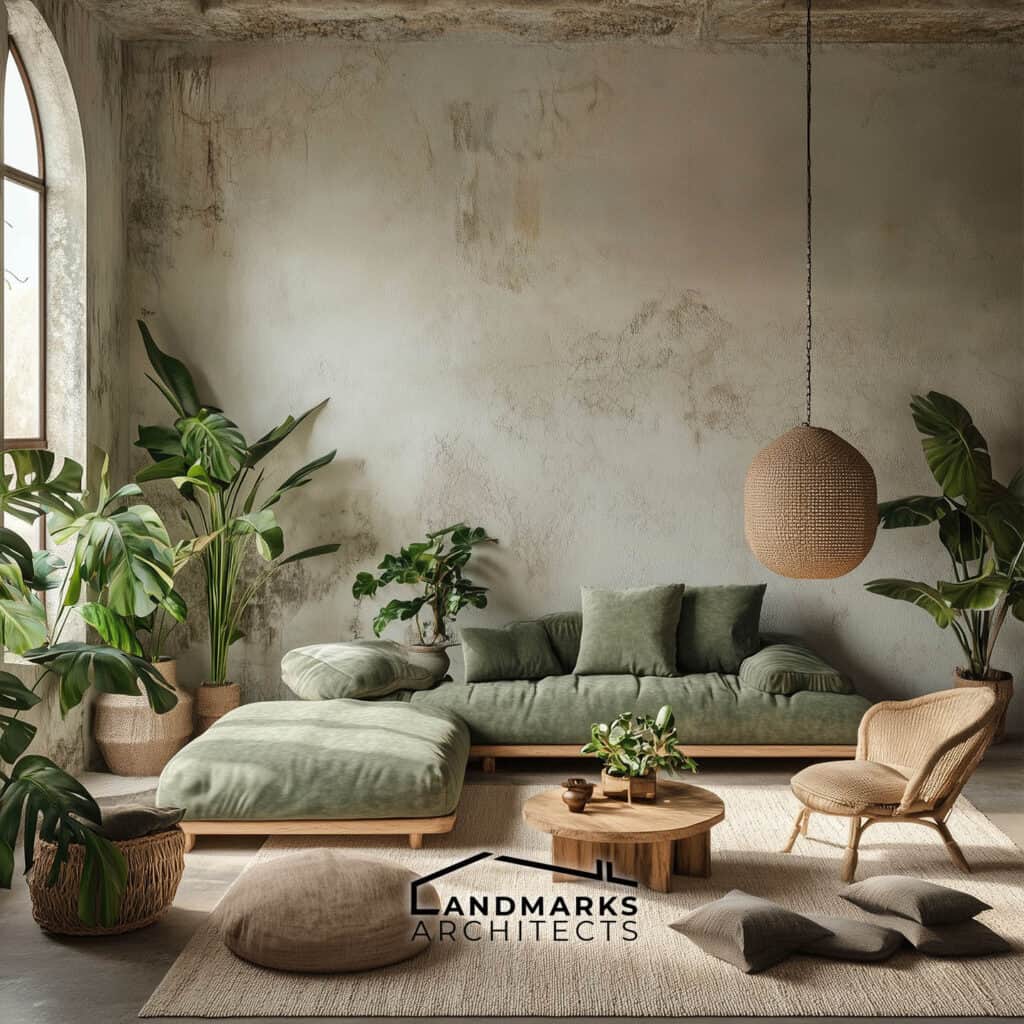
Mindful spaces in Wabi-Sabi design focus on simplicity and a connection to nature. They create calm and reflection by celebrating imperfections and natural beauty. To create a mindful space:
- Use Earthy Colors: Muted greens and browns.
- Incorporate Natural Textures: Wood and stone.
- Choose Worn Furnishings: Items that show character and wear.
Mindfulness in design means every item should have meaning or a story, encouraging a deeper connection. Adding plants enhances this vibe, purifying the air and adding vibrancy.
See Also What is the Art Deco Style in Architecture? 3 Signature Elements to Know
9. Impermanence

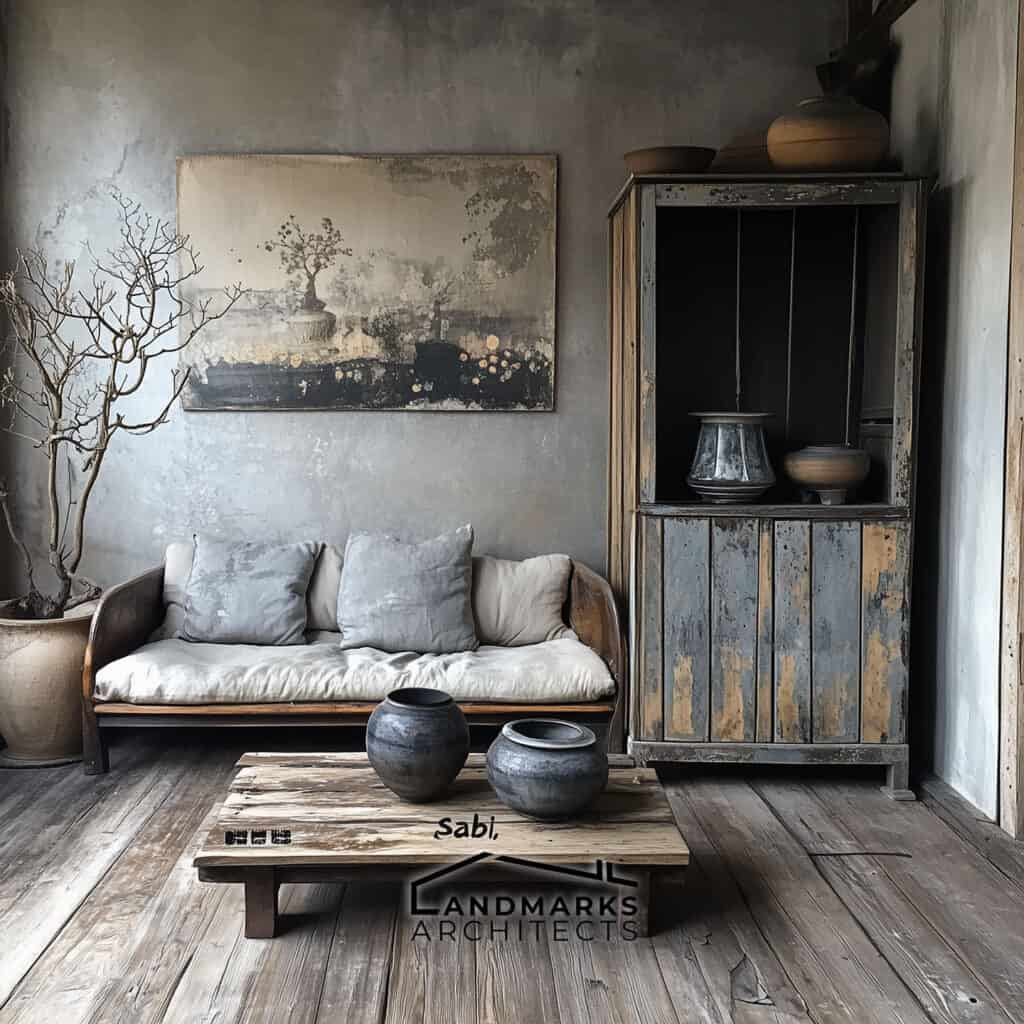
Impermanence is a key idea in Wabi-Sabi philosophy, highlighting the ever-changing nature of life. In Wabi-Sabi design, this concept values the fleeting beauty of things as they age. Cracked ceramics and weathered wood are appreciated for their unique character.
Embracing impermanence means accepting imperfections. Even small details, like a dent in a table, tell a meaningful story. Wabi-Sabi celebrates beauty in the unfinished and incomplete.
The term “Sabi” reflects the charm that comes with age. By accepting and celebrating change, Wabi-Sabi creates spaces that feel authentic and warm, reflecting personal journeys.
Wabi-Sabi Interior Design: A Recap
Wabi-sabi interior design celebrates the beauty of simplicity and imperfection. This Japanese philosophy values natural materials, minimalism, and the passage of time. Having earthy tones, natural light, and authentic, imperfect furniture creates a serene and mindful space.
By focusing on imperfections and the unique character of each item, Wabi-Sabi transforms your home into a peaceful retreat that reflects personal authenticity and the natural world.










